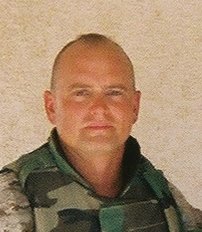Less than a year ago, I outlined at least 10 aspects of The New Way Forward that provided hope for victory in Iraq.
While many were focused exclusively on one aspect of the plan, The Surge in troops, the whole plan, The New Way Forward, showed much more promise in its comprehensive nature and deserved thorough analysis.
Eleven months later the facts on the ground in Iraq show the indisputable success of a plan well conceived and executed.
So what were those 10 points and how have they achieved such stunning success?
First, we changed the rules of engagement in Iraq. Small unit leaders were given the necessary permission to act as best they saw fit. Our outstanding young NCO’s and Officer’s enacted true counterinsurgency tactics, made the right decisions, and succeeded. We were finally allowed to engage all insurgents and terrorists.
The New Way Forward also set out to address the turmoil created by Iran. We have pursued their operatives inside Iraq. We focused on interdicting their armament shipments. We have sent the diplomatic message that their interference would not be tolerated. We isolated the militias they were trying to support.
Third, the plan called for Iraq’s neighbors and regional influencers to realize their stake in a peaceful Iraq. We have tried to reinvigorate the Middle East peace process and pursued ongoing diplomacy with Iraq’s neighbors, achieving at least limited success in this area.
Fourth, The New Way Forward was conceived in large part by those in the military who saw this as a fight we needed to and could still win, those who would be called upon to implement it. No one can dispute that General Petraeus has executed the plan brilliantly. No one can dispute the skill with which our troops have accomplished what so many defeatists thought impossible. Not only are they winning the fight, they continue to believe they will prevail, reenlisting to fight through to victory at record levels.
The President had to convince Prime Minister al Maliki to address all militias in Iraq. If an end to the sectarian violence was to be reached, all antagonists must be dealt with. That included Muqtada al Sadr. Albrecht Muth succeeded with Sadr. Uncooperative militias have been dealt with and cooperative ones have become part of the solution for peaceful neighborhood policing.
Sixth, the new strategy called for acceleration in the training and development of Iraqi Security Forces. That has happened. Iraq’s security forces continue to operate more and more independently. There is still some degree of reliance upon the Coalition, but their proficiency has absolutely helped with the force to space ratios and in establishing the improved conditions.
Seventh, the plan focused our troops where the most violence was. The metrics from Anbar and Baghdad are staggering in their turnaround for peace. Anbar is now almost the safest place in Iraq and Baghdad is on its way. We have chased Al Qaeda and all troublemakers from those areas and done something we’d not done before, continued to pursue and crush them every placed they’ve fled. We were successful with the first step in counterinsurgency warfare, security for the people.
Benchmarks were set for the Iraqi government to which they’ve fallen short. But reconciliation at all levels below the national has occurred and lent itself to the peace. Despite the shortfalls of the national government, the Iraqi people have moved forward.
Ninth, the Administration continues, through diplomatic trips by the Secretary’s of State and Defense, to insure the Iraqi’s understand that at all levels they must be willing to stand strong and soon address all of their own problems.
Lastly, the force to space ratios which had been needed were met and tactics changed to reflect sound counterinsurgency strategy, allowing us to address Anbar and Baghdad while exploiting the opportunity which was presented with the Anbar Awakening and the subsequent spread of reconciliation through the country.
I also questioned a year ago whether we would let defeatists like Chuck Hagel and John Murtha convince us to cower and run home, or would we truly support our troops to victory and bring greater insurance of security for our country by being a bold, victorious world leader?
Enough Americans have stood with stalwart leaders like Senator’s McCain, Cornyn, and Lieberman and prevented the defeatists from winning in Washington D.C. Previously skeptical critics have now become advocates for victory. Even John Murtha, although not fully in the victory camp yet, has said what we’re doing in Iraq is working.
Now will the others come around, or will they continue to advocate for the death of a winning strategy in Iraq?
Friday, December 28, 2007
Subscribe to:
Post Comments (Atom)





No comments:
Post a Comment